The road to 75 years has not been easy, yet India has come a long way – from a country that saw its wealth drained by its colonial masters, to a major player in the global economy. Atul Thakur lists some of the milestones of each post-Independence decade.
1947-1957: NEHRUVIAN SOCIALISM
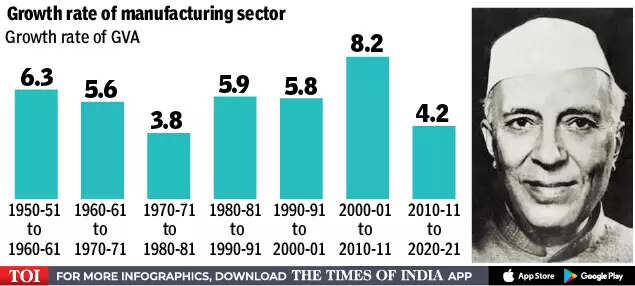
Unlike many other colonies, India had an indigenous industrial base in 1947, which was necessary for de-linking itself from its colonial past. But it lacked industries making capital goods – machinery used by factories for production.
Inspired by the New Deal policies in the US and the state-owned enterprises of the erstwhile USSR, India’s business class urged the government, under the ‘Bombay Plan’ of 1945, to start large public sector firms to make capital goods. It focused on rapid industrialisation in the decade after Independence, and in terms of GVA (gross value added), this was the second best decade so far.
1957-1967: CRISES & NEW ALLIES
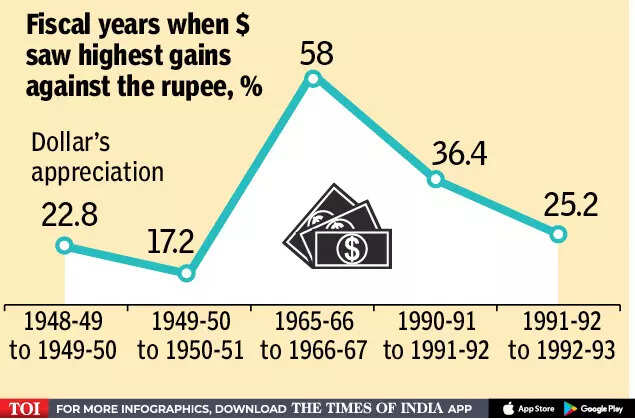
This decade brought two wars (1962 China, 1965 Pakistan), back-to-back drought years (1965, 1966), high inflation , balance of payment worries, and pressure from IMF and World Bank for currency devaluation and structural reforms. US refused to renew the PL-480 (wheat loan) deal on a long-term basis after the Pakistan war. It all led to the first devaluation of the rupee, and brought India closer to the Eastern Bloc and forged the Indo-Soviet friendship.
1967-1977: NATIONALISATION 2.0
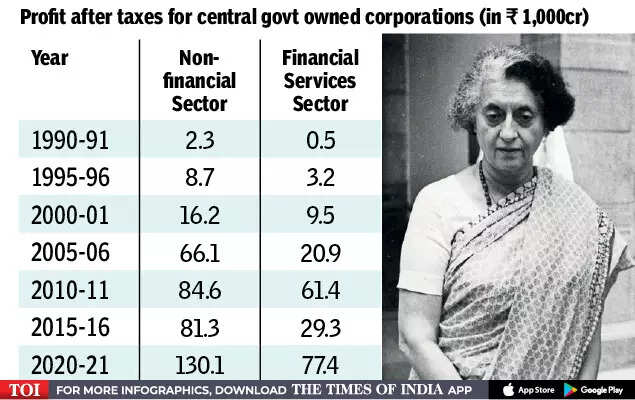
The first wave of nationalisation happened in the 1950s when civil aviation, railways, etc were nationalised and public sector units like ONGC, BHEL and SAIL were formed. In the decade to 1977, PM Indira Gandhi replicated the socialist economic policies of the 1950s. Banks and coalfields were nationalised, and the anti-monopoly law MRTP brought in. Many of the PSUs are still profitable while others like BHEL, MTNL and HECL have failed.
1977-1987: MARKET TURN
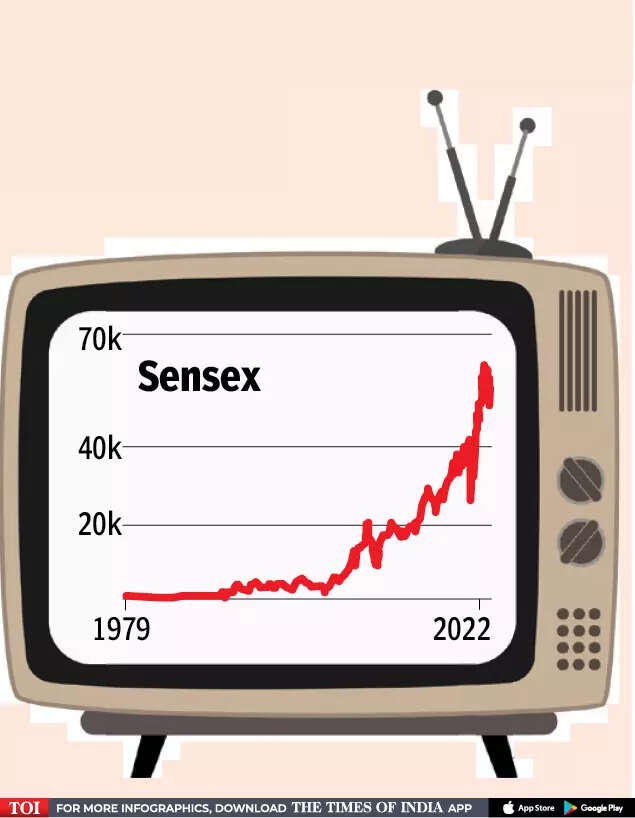
The launch of BSE Sensex and India’s first colour TV telecast are emblems of this decade. Both point to the growth of a middle class with spare money to invest and spend. The Sensex launched in 1986 with 1979 as its base year. Its present value is 581 times the base. Colour telecasts started in 1982 and the decade brought many popular TV series, including Hum Log, Buniyaad, Chitrahaar, Ramayan and Mahabharat.
1987-1997: LIBERALISATION
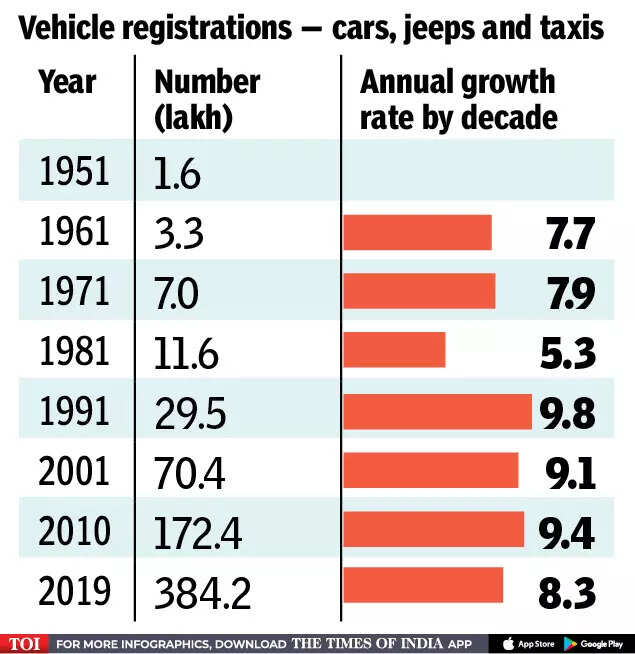
1991 brought Liberalisation and many industries earlier under government control were opened to private players. Car ownership rose rapidly, aided by the success of Maruti Udyog Ltd. The government and Suzuki started the joint venture in 1982 to make affordable cars, and it remains the market leader, even though the government has withdrawn from the company.
1997-2007: GROWTH ON STEROIDS
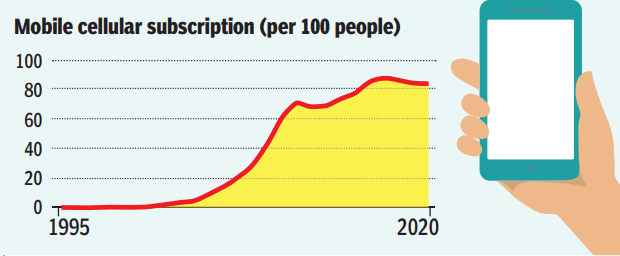
This decade saw India grow at its fastest ever rate. In 6 of these 10 years the Indian economy grew at 8% or more, including one year of 9% growth. With increasing cell phone ownership, tele-density increased rapidly, paving the way for the internet’s spread.
2007-2017: SPACE AGE
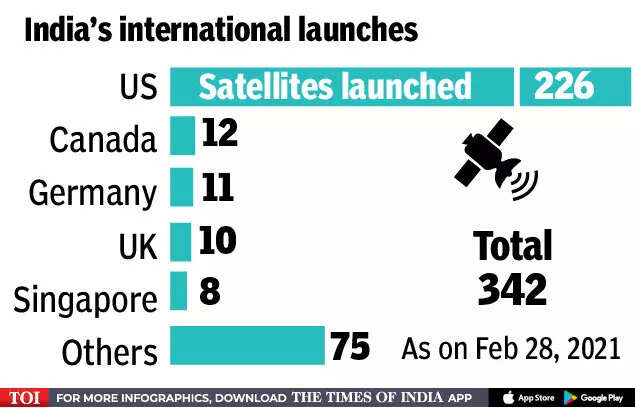
In 1980, the launch of Rohini satellite aboard the SLV-3 rocket put India in a select club. It is now a serious contender in the space launch market with more than 340 foreign satellite launches. Its PSLV is seen as one of the world’s most reliable launchers
2017-2022: FINANCIAL INCLUSION
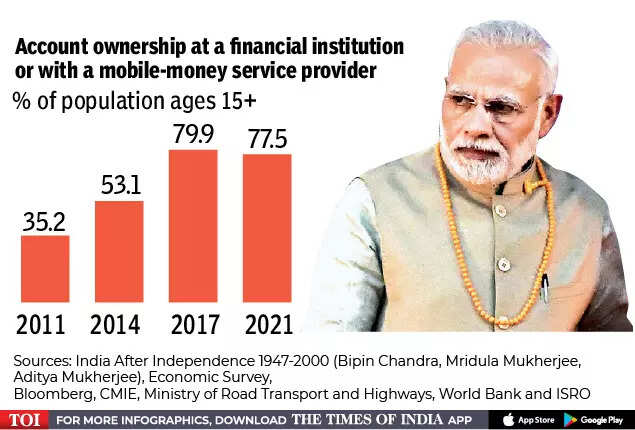
The launch of Pradhan Mantri Jan Dhan Yojana has accelerated the rate of financial inclusion with the rapid opening of bank accounts. The scheme has also helped in the direct transfer of benefits of various government schemes to the poor.
Sources: India After Independence 1947-2000 (Bipin Chandra, Mridula Mukherjee, Aditya Mukherjee), Economic Survey, Bloomberg, CMIE, Ministry of Road Transport and Highways, World Bank and ISRO